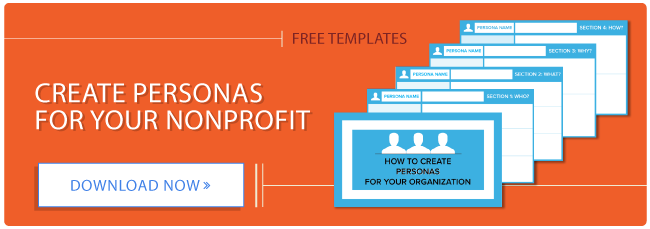
Internal HubSpot research has found that companies that blog at least 15 times each month see 5 times more traffic than those that don't. Some MIT smarties studied HubSpot's ROI specifically and found that users generated 4.1 times more visitors and 3 times as many leads per month after using HubSpot for a year.
That's real, impactful return on your marketing efforts. The reality of these positive numbers makes sense given the operating premise of inbound marketing. Namely, the old, interruptive "Buy me now!" approaches don't work today. The number of information channels never stops growing and nobody gets to enjoy a captive audience anymore.
Inbound marketing simply reflects the fact that in today's market place, the consumer (constituent, donor, or member) is in the power position. If an organization, nonprofit, or otherwise, wants people's dollars or loyalty, it first has to earn their attention. That's why inbound marketing is all about building trust and authority with people through content.
Once becoming a trusted authority that holds the right people's attention, an organization can then move those people to respond positively to the larger asks, such as making the commitment to become a member.
Here's the rub. Becoming a trusted authority doesn't happen with one banner ad or annual report. Succeeding with inbound marketing takes consistent effort over the long haul.
That's why the answer to the question when should your organization start inbound marketing is "now." Inbound really is the only marketing that's proven to be cost-effective, yet it takes time to see results.
Forget About Going "Viral"
Even people who aren't familiar with a term like "inbound marketing" know about going viral. If your goal with inbound marketing is "to go viral," you're doing it wrong. Inbound marketing is a long-haul proposition that requires investing time and effort.
Your organization isn't going to get a reputation for being as informative, helpful, and reliable overnight. You have to work at it.
Consider the first phase in inbound marketing methodology – attracting traffic and prospects. The inbound tactics to attract your ideal prospects include: boosting traffic to your website via SEO-optimized pages and blogs, and earning high quality backlinks. Strong SEO rankings and authoritative backlinks only come with consistently publishing relevant content that's irresistible to your market.
Getting those backlinks that push your content up in the SEO rankings takes time. They each feed off each other. When you regularly publish on-point content, it starts getting shared, which can attract backlinks. Google takes more backlinks to content as an indicator of high authority, so ranks it higher.
Of course, your great content will only get shared by the organic traffic if it gets found in the first place. It takes time to see whether your current SEO strategy is bringing in the traffic you need. Everyone has to tweak their SEO based on actual results to improve traffic flow. That takes time as well.
The good news is that both work in a virtuous cycle of refined SEO strategies bringing in more organic traffic, which gets shared and attracts backlinks, which in turn increases the authority of your website with Google, bringing in more organic traffic. But if you want to get into this cycle, you have to make the first move.
So if you have a major membership drive or other campaign scheduled for six months from now – get your blog and inbound marketing strategy rolling now. Any delay undermines your potential.
Inbound is an Investment with Long Term Dividends
Now we've been focusing on the long-term investment you need to make with inbound marketing to reap its highest rewards. But understand a major reason why inbound has such great opportunity is because you aren't simply developing marketing collateral – you're developing marketing assets. Assets that can attract eyeballs and hearts towards your organization well after they're originally published.
HubSpot's research into our own blog performance showed that 76% of our monthly blog views and 92% of our monthly blog leads came from posts at least one month old. That means the more we post, the more lead potential we realize. Blog posts are (a bit) like wine... they age well.
But we also found that with some tweaking, we can get old blog posts working even better. We refreshed some of our highest converting blog posts with updated keywords based on more recent research, and updating the content to be more accurate and comprehensive. Once we did that, the traffic and leads coming off these refreshed posts doubled.
That's right. Older content that already rocked got a refresh and started rocking even harder. Yet for this to work, you need enough content already on your site that gives you the information and insight on how to optimize it effectively, at least a year's worth.
A similar approach can work for all sorts of inbound content. Once you create an in-depth report as gated content, you can regularly update it, run a new angle promotion campaign, refresh its landing page, or add a download call-to-action for it on more blog posts.
After you create a high quality inbound asset, you always have it to be used in all sorts of ways to drive prospects into and through your funnel. But as with all inbound tactics, it takes time. You need a certain library of content assets already created before you can start maximizing the return they provide you.
Start Building Your Organization's Asset Portfolio Today
I always hate those charts that show how much you'd have in savings if only you started saving five years ago or two years ago, and so on. I hate them because I know they're right.
It's the same with inbound marketing. The sooner you start, the sooner your organization will reap the rewards. And the sooner you'll get to that tipping point where your results seem to accelerate even faster now that you've built successful workflows and campaigns, online authority, and a growing library of content assets.
Getting started is easier than you think. First, take a deep dive to understand the inbound marketing methodology. After you learn the framework and processes that drive inbound marketing success, you can launch your own plans for inbound success. Your timing will never be better.

No comments:
Post a Comment